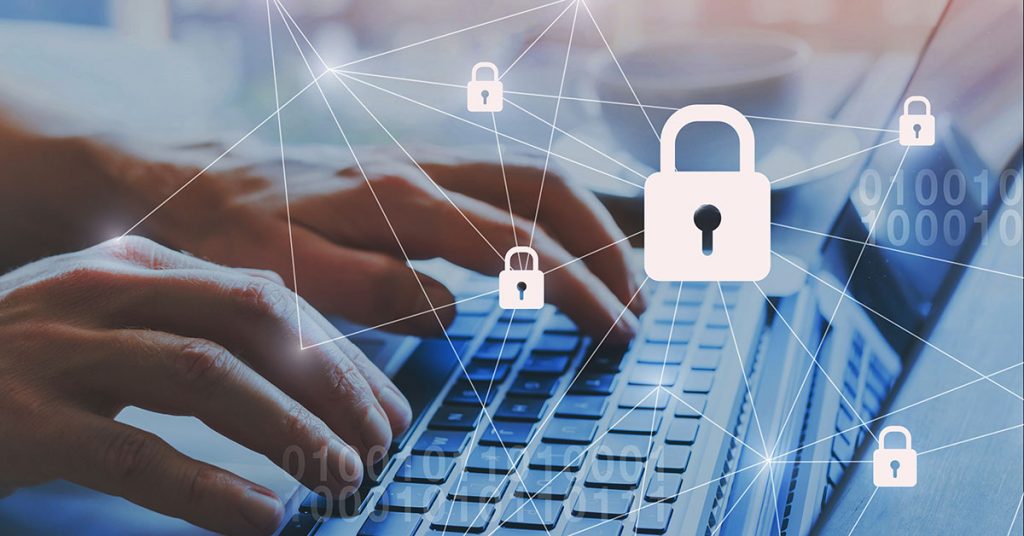
The healthcare industry is constantly evolving and new tools to help medical providers are constantly being introduced.
Despite criticisms, like their potential effect on increasing physician burnout rates, electronic health records or EHRs have become widely adopted by healthcare organizations. In fact, they are now required by all medical entities under the American Recovery and Reinvestment Act.
Since EHRs became the new standard in the medical industry, they have brought countless benefits to healthcare organizations. Several of these benefits include:
- Providing accurate and complete patient information at the point of care
- Assisting providers in diagnosing patients, reducing medical errors, and offering safer care
- Enabling easy access to patient records for efficient, coordinated care
- Helping providers boost productivity and work-life balance
- Promoting legible documentation to use for streamlined coding and billing
- Improving efficiency
Why Cybersecurity is Important in Healthcare
While there are a variety of benefits to EHRs, there are also several threats. We are talking about digital technology after all.
Healthcare organizations are at an increased risk for cyberattacks because of the quality of their data. They have valuable, confidential information including names, addresses, birth dates, social security numbers, and credit card or bank account information, that cybercriminals can sell or use as leverage for ransom.
Additionally, with so many connected devices, individual device-level protection simply isn’t enough. To truly defend your healthcare organization’s network, you should have layered security measures in place.
To best understand how to protect electronic health records, it’s important to understand the threats against them:
Access Concerns
As mentioned, one of the primary benefits is that EHRs enable easy access to patient records for efficient, coordinated care. When thinking of coordinated care, communication among physicians from different specialties within the same group network often comes to mind. But it can also be as simple as maintaining a consistent quality of care through things like nurse shift changes.
While a physician may have his or her own personal device that they use to access a patient’s protected health information (PHI), there are many instances where a single device is being shared by many users. Ask yourself, who has access to what devices, and what are you doing to reduce your vulnerabilities?
Breach Concerns
Since EHRs involve a digital format, there are concerns about a data breach. Internet hackers do have the potential to access confidential medical information by hacking into an individual device, the WiFi network, or an organization’s entire server. By gaining access to this data, hackers are then able to leverage it for ransom.
Recently a small hospital in Colorado refused to pay after a ransomware attack targeted their software. They are still trying to recover about five years’ worth of electronic records they were unable to recover from backups and other sources.
The current climate has only increased the cybersecurity challenges facing the healthcare industry. Amidst the COVID-19 pandemic, the speed and scale at which healthcare organizations have had to embrace cloud hosting, often without proper due diligence, could lead to lasting risks and vulnerabilities for a much bigger attack surface.
Conversion Concerns
Switching from a paper-based health records system to EHRs doesn’t happen overnight. Particularly for healthcare organizations that have been around for decades. This conversion leaves the risk of misplacing data throughout the process. Fortunately, however, vendors who sell and specialize in EHRs have designed effective strategies to eliminate the misplacement of data.
How Fast Chart Ensures Privacy and Security
Fast Chart understands these threats and makes it a top priority to address them. We have worked tirelessly to provide the highest quality security to mitigate the risks of shared device access and to eliminate the risk of a breach. Additionally, we have unique processes in place to eliminate the misplacement of data.
If you decide to work with us, we’ll collaborate with you for a smooth and secure transition. You can count on us to help you provide top-notch security and privacy by:
- Enhancing administrative controls
- Monitoring physical and system access
- Auditing and monitoring system users
- Using device and media controls
- Applying data encryption
Regardless of which EHR provider you are using, we can integrate seamlessly with your system to meet all requirements.
With Fast Chart by your side, you don’t have to worry about any EHR threats. We’ll ensure that this digital version of paper charts will work to your advantage. For more information on our services and how we can revolutionize your practice, don’t hesitate to contact us today.
